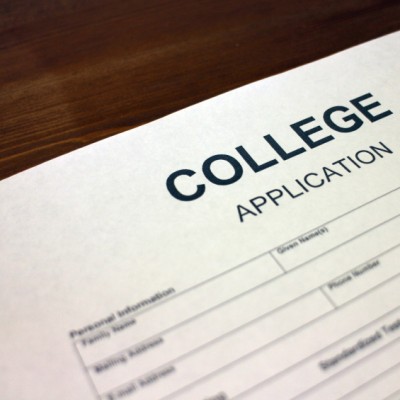Organize + Energize: 9 Ways to Get Your Kids Organized For Back to School





 Email to a friend
Permalink
Email to a friend
Permalink
Monday, August 31, 2015
Kristin MacRae, GoLocalPDX Organizing Expert
It’s that time of year again. It’s time to get everybody organized for a stress-free school year. It’s time to start planning and preparing and getting ready to get back into your fall routine. I’ve had the pleasure of working with many kids this pre back-to-school season and it’s been an enjoyable experience for all!
Here are 9 ways to get your kids in organization mode for back to school:
Transfer the skill set. If your kids are old enough, it’s time to transfer the organizational skill set during this pre-school season. Start them young and talk to them about creating organized systems and how to maintain them. If you don’t have the skill set, you can hire a professional to work with your kids.
Give them structure. Most kids love structure. Structure keeps kids organized. Living in an organized, structured home versus a chaotic, disorganized home will help kids focus and become less distracted. Your kids may be craving structure and organization. Have the conversation with them about creating structure.
Declutter. It’s time to declutter your kid’s spaces. When was the last time you went through their books, toys, clothes, papers, etc.? If it’s been more than a year, it’s time to declutter. You won’t believe what your kids have outgrown in a year, and I’m not just talking about clothes. They may be more ready to get rid of things than you think. Sometimes I find that the kids are more eager to let go of things than their parents. It’s an exciting process. Get your kids involved in the process.
Paper management. I can already hear the moans about the paper that arrives during the school year. You have to have a system to control this paper. Everybody functions differently so not every system is created equal. The key is to create a simple system that can be maintained throughout the year. Decluttering this system at the end of each semester or school year is also crucial. Don’t forget to keep a memorabilia container to store all of the important and meaningful items that they accumulate throughout the year.
Organize bathrooms. Why organize the bathroom? It’s so everybody can become more efficient during their morning routine. Create working organized systems in the bathroom to decrease time spent in the bathroom. Declutter, categorize, itemize and contain everything to make mornings easier.
Organize bedrooms. It’s so important for your kids to have an organized bedroom. Start with decluttering this space and then work with them to organize it according to how they function, not the way you function. Talk to them and ask them questions. You will be surprised that they have answers to the questions. They know how they want to function and creating those systems around how they function will give them motivation to maintain that organization.
Homework space. Talk to your kids about how they want to function this year with their homework. Do they want a quiet desk space in their room away from the distractions in the kitchen? Wherever they choose to function, set them up with all of the supplies they will need to be successful. Categorize and itemize their school supplies and create systems for them to easily maintain.
Give them a calendar. Have them keep a calendar on their desk to keep track of important dates. Sports, dances, doctor’s appointments, test dates, and other important appointments should be kept on their calendar. It’s a great time to get them started in keeping track of where they have to be and how they can prepare for upcoming events.
Morning routines. Make morning routines easy on you. You’ll be able to spend more time in the morning at the breakfast table. Plan and prepare lunches and backpacks the evening before. Plan outfits for the week. Having an organized home will help make morning routines easier.
Have a conversation with your family and make a plan to get organized for this upcoming school year. Once you get organized in the home and reduce the clutter and chaos, you’ll be able to live a less chaotic and simpler life.
Kristin Carcieri-MacRae, the founder and owner of Organizing in RI, has always enjoyed finding creative ways to streamline the environment around her. She has appeared on air on Patricia Raskin's Positive Business Radio and her articles have been published in the Rhode Island Small Business Journal and New England Home Life. Kristin's CD, Organizing Basics, is a 1-hour guide for the person who wants to get organized but doesn't know where to start. She is also available for organizing workshops. Tune into her weekly radio show, Organize, Energize! on talkstreamradio.com.
Related Slideshow: Month-by-Month Guide for High School Seniors
This timeline will keep your college applications on track throughout senior year.

Prev
Next
All Year
- Take a rigorous senior year class schedule.
- Work hard all year—second-semester grades can affect scholarship eligibility and an admission offer can be revoked if your grades fall significantly.
- Stay involved in after-school activities, and seek leadership roles if possible.

Prev
Next
June & July
- Get a copy of your high school transcripts with final grades through end of junior year, unweighted and weighted GPA, and class rank if your school provides it. Review the transcript and make sure everything is accurate. Alert your school if there are needed corrections.
- Review your standardized test results and decide if you plan to retake in the fall. If so, make a prep plan.
- Based on your grades and test scores, re-evaluate the list of colleges you’re thinking of applying to. Narrow the list. (6-9 is a good range for most students, although fewer or more could be appropriate in your particular circumstance.)
- Research school scholarships.
- Determine which schools accept the Common Application and which schools require you to fill out their own application.
- Compile a list of dates admissions representatives from schools on your list are travelling to your town and schedule admission interviews (if the school offers them and you choose to have them).
- Student athletes should fill out the NCAA eligibility form on the web and send them end-of-junior-year transcripts (if this wasn’t done already).
- Begin collecting material for your arts, audition or sports supplement
- Student athletes should prepare an athletic resume and reach out to coaches.
- Student performers should prepare artistic resume, statement of artistic intent and make a calendar of audition dates.
- Student writers should prepare writing samples and a statement of artistic intent.
- Do social media cleanup (this is sometimes called “reputation management”).
- Brainstorm essay topics and then draft, edit and finalize common application personal statement (target 500-650 words).
- Complete detailed research about schools on final list: two classes, two professorss and their research, two clubs, a school tradition, and at least one other buried treasure.

Prev
Next
August
- Make a calendar with school application and scholarship due dates, include supplemental essay questions and word count if known.
- Fill out common application (less supplements) and start school specific applications for those that do not take the common app. Be sure to write down your passwords in a safe place.
- Draft supplemental essays.
- Research outside scholarships and decide which are a match.
- Sign up for additional standardized testing, if needed (Sept-Nov test dates).
- Decide if you are applying to one school early decision, and any other schools early action.

Prev
Next
September, October
- Meet with your school counselor to make sure you are on track to graduate and fulfill college admission requirements.
- Ask teachers, counselor and outside mentor to provide letters of recommendation (if you didn’t ask in the spring). Give them a “reminder sheet” and list of schools. Put in this request via Naviance if required by your high school. Fill out any additional recommender request forms desired by your school counselor.
- Retake any standardized tests if needed.
- Attend all local area visits from school to which you are applying to demonstrate interest.
- If affordable and practical, visit colleges on your list when you have days off from school.
- Edit and finalize supplemental essays.
- Complete applications including supplements.
- Complete arts, audition or sports supplements and upload to Common App, Slideroom, Admitd, or another place per the school specific instructions.
- Pay application fees and submit early decision/early action applications.
- Send high school transcripts if you are on the semester system (and other transcripts, if applicable).
- Send official test scores unless you are retaking (SAT, ACT, AP, IB).
- Print and file copies of applications, just in case you need them.
- Fill out the CSS Profile if you are applying to any private schools (parental help needed on this).
- Complete first draft of early scholarship essays. (Applications availability and deadlines will vary on outside scholarships, so don’t worry if you can’t do them all now—just remember to add them to your list for later!)
- Do a practice interview.

Prev
Next
November
- Submit applications for regular decision by Thanksgiving. (I want you actually have a break during winter break!)
- Finish and submit external scholarship applications (as applicable since some are done in spring).
- Send high school transcripts that include first trimester of senior year as soon as they are available.
- Check Naviance, the Common App and school specific application tracking portals to determine if recommendation letters, counselor letter, transcripts have been sent from your school. Send reminders to recommenders if needed.
- Schedule alumni or on-campus interviews. (Schools vary on when they allow this. Schedule them as soon as possible, but don’t worry if it’s later than listed here.)
- Start looking over the FAFSA and get a pin number.


Prev
Next
January
- Parents should file their taxes as soon as possible, and students should file the FAFSA as soon as possible thereafter. If your parents can’t file in January, fell out the FAFSA using estimated numbers from the prior year’s taxes.
- Once students have filed their FAFSA, they should review their Student Aid Report (SAR) for accuracy.
- Participate in alumni interviews and send thank-you notes to interviewers.

Prev
Next
February
- Complete any spring scholarship applications.
- Follow-up with school if you were deferred at early decision.

Prev
Next
March
- Get acceptances—celebrate! Enjoy your acceptances and shrug off any denials.
- Once financial aid packages start coming in from each school, review and compare them.
- Work with your parents and counselor to rank your options and evaluate any wait list offers.

Prev
Next
April
- If affordable for your family, visit the top three choice colleges that have admitted you.
- Attend “accepted students” gatherings in your city.
- Appeal aid with schools if there are special circumstances.
- Request deferral if you want a GAP year.

Prev
Next
By May 1st
- Make a choice; send in your deposit to one school only.
- Inform the schools you won’t attend.
- Let your recommenders and friends know where you’re headed.

Prev
Next
May
- Execute wait list follow-through plan.
- Don’t lose focus—finish the school year with strong grades.
- Advise your school counselor which school needs your end-of-year transcript (update Naviance).
- Note orientation, registration, and other important dates and deadlines for the upcoming school year.
- Analyze your financial situation and work on a budget for your first year of college.
- Write a thank you to everyone that helped you along the way. Buy a school sweatshirt. Get excited!
Related Articles
Enjoy this post? Share it with others.





 Email to a friend
Permalink
Email to a friend
Permalink






























Follow us on Pinterest Google + Facebook Twitter See It Read It